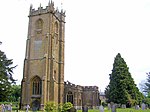Over Stratton

Over Stratton is a small village in the district of South Somerset, Somerset, England. It is part of the parish of South Petherton along with the nearby hamlets of Lower Stratton, Wigborough, Yeabridge, Drayton and Watergore. As of census day 2011, the population was 317.Towards the north end of the village, Stratton & District Village Hall provides an amenity for the local residents and hosts community events such as coffee mornings. It also hosts a nursery for pre-school age children. In the centre of the village there are two hospitality-related businesses: a public house with a restaurant (the Royal Oak), and a restaurant that also has rooms for bed and breakfast (New Farm). A third hospitality-related enterprise is situated at the southern edge of the village on the road to Merriott. It holds occasional feasts, approximately once a month.The village also has a Methodist church but services are no longer held there. There is a blacksmith's forge on a side track leading off Bull Bridge Lane.
Excerpt from the Wikipedia article Over Stratton (License: CC BY-SA 3.0, Authors, Images).Over Stratton
Over Stratton Road,
Geographical coordinates (GPS) Address Nearby Places Show on map
Geographical coordinates (GPS)
| Latitude | Longitude |
|---|---|
| N 50.933 ° | E -2.805 ° |
Address
Over Stratton Road
Over Stratton Road
TA13 5LQ
England, United Kingdom
Open on Google Maps









